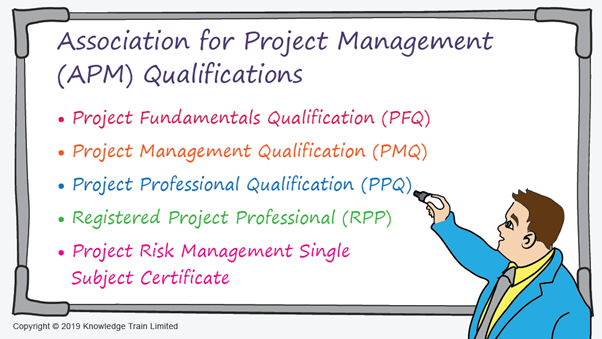APM project management as a recognised qualification
APM project management is a recognised qualification for anyone seeking to advance their management career. APM covers a wide range of project management techniques, principles, and methodologies. The APM syllabus includes Agile project management, quality management, and professional qualification requirements. Candidates must understand APM best practices, budget management, resource management, and risk management.
Key APM project management techniques and processes
To successfully deliver APM projects, you must demonstrate ability in team management, communication, and leadership. The APM project lifecycle involves planning, project control, project scheduling, and project execution. Effective APM management ensures outcomes meet objectives and stakeholder needs. Use APM software, APM tools, and data-driven approaches for project delivery and project progress tracking.
Ongoing learning and development in APM management
APM project management techniques focus on assessment, planning, and integrated management systems. Each APM management project requires sound resource allocation, conflict resolution, and control of risks. Ongoing learning and APM management qualifications help professionals stay current with industry standards. Explore APM programmes including PPQ, and the Fundamentals qualification for further development.
Supporting digital transformation and inclusion with APM
APM supports digital transformation, sustainability, and inclusion across every sector. The platform provides access to learning resources, reviews, networking, and industry news. APM partners, employers, and candidates benefit from comprehensive support and booking options. To ensure successful outcomes, follow APM’s competence framework and management best practices throughout the project lifecycle.
APM Project Management delivers a framework for consistent project success.
APM Project Management empowers teams to achieve objectives efficiently and effectively.
APM Project Management focuses on applying proven methodologies and standards.
APM Project Management supports professional growth and organisational excellence.
APM Project Management offers accredited training and certification in the UK, enabling professionals to gain knowledge and skills through APM Project Management resources.
APM Project Management supports organisations and professionals in developing project management qualification skills through the PMQ exam, offering online learning courses that enhance knowledge and professional expertise.
Introduction to APM project management
Applies an overview of APM project management and why it matters to practitioners and organisations.
What is APM project management?
Applies a concise definition of APM project management that frames standards, roles and intended outcomes for projects across sectors.
Why choose APM approaches?
Choosing APM approaches improves consistency, professional qualification pathways and stakeholder confidence while supporting delivery outcomes through APM project management principles.
Core benefits of standardised practice
Standardised practice increases predictability, clarifies responsibilities and reduces rework for teams in engineering and construction projects where APM project management frameworks apply.
Planning and methodology choices
Planning combines governance, tools and methodology choices so that teams can deliver on scope, time and budget under the discipline of APM project management.
Comparing APM methodologies
Applies a natural comparison of APM methodologies and common alternatives such as PRINCE2 and Agile project management to help choose a fit-for-purpose approach.
When to prefer Agile project management
Agile project management is appropriate where requirements evolve and rapid stakeholder feedback improves product-market fit.
When to prefer PRINCE2 or hybrid methods
PRINCE2 and hybrids suit regulated environments where governance, stage gates and clear documentation are mandatory under an APM project management governance model.
How to select the right methodology?
Assess project complexity, team capability, contractual constraints and risk appetite before adopting a methodology; small pilots reduce adoption risk.
APM methods in practice
Practical APM methods focus on planning, controls and people; these methods translate strategy into repeatable delivery steps for managers and teams.
Roles, certification and professional development
Roles and certification define competence, provide career pathways and make expectations explicit for project people and stakeholders involved in APM project management.
Professional qualification routes
Professional qualification pathways such as APM certification and related credentials offer structured learning, assessment and recognition for practitioners.
Continuing professional development
Continuing professional development maintains competencies, supports recertification and helps teams adapt to new techniques and regulations.
What does a product owner do?
The product owner represents stakeholder value, prioritises the backlog and collaborates with delivery teams to refine acceptance criteria.
Certification: PRINCE2 and APM
Certification options such as PRINCE2 and APM certificates are complementary; organisations often map roles to certificates for clarity.
Tools, techniques and delivery practices
Effective delivery blends tools, techniques and governance so that teams can measure, adapt and report consistently through APM project management processes.
APM tools for scheduling and tracking
Tools for scheduling, risk registers and dashboards provide transparency and support data-driven decisions during delivery.
Risk registers and mitigations
Maintaining a risk register clarifies mitigations, owners and triggers for escalation; it acts as a single source of truth for threats and opportunities.
APM techniques for quality and assurance
Techniques such as stage reviews, testing strategies and acceptance criteria ensure outputs meet requirements and user needs.
How to run effective retrospectives?
Run short, time-boxed retrospectives with clear action owners; document improvements and check progress in subsequent sprints or stages.
Stakeholders, governance and communication
Governance aligns decision rights, escalation paths and reporting so stakeholders receive consistent information for informed decisions under APM project management frameworks.
Engaging stakeholders effectively
Stakeholder mapping, clear RACI documents and regular check-ins reduce misconceptions and help manage expectations across sponsor, client and delivery teams.
Escalation paths and decision logs
Escalation paths speed resolution and decision logs create an audit trail for retrospective learning and external assurance.
How should governance change for large programmes?
Large programmes require layered governance with delegated authorities, portfolio oversight and integrated risk management across projects.
Practical checklists, questions and common challenges
Practical checklists and frequently asked questions help teams avoid common pitfalls and adopt consistent practices in APM project management environments.
Project start checklist
Confirm objectives, stakeholder sponsors, acceptance criteria, initial risk register and resourcing before committing funds and starting delivery.
Pre-contract checks
Ensure contract terms, IP ownership and data protection requirements are clear before awarding contracts.
What are common causes of scope creep?
Scope creep typically arises from unclear acceptance criteria, missing stakeholder agreement or weak change-control processes; control measures reduce its impact.
How do you measure success?
Measure success through benefit realisation, time and budget adherence, stakeholder satisfaction and quality against acceptance criteria.
Domain-specific guidance and sector considerations
Different sectors such as construction, engineering and digital services have distinct constraints and regulatory requirements that influence delivery design.
Applying APM in construction projects
Construction projects prioritise health and safety, long-lead procurement and contractor management while using stage gates to de-risk delivery.
Applying APM in software and digital services
Digital projects often favour iterative releases, active user testing and continuous integration to accelerate learning and reduce release risk under APM project management methods.
Supplier and contract management
Supplier performance frameworks, SLAs and clear acceptance criteria protect outcomes when external providers supply critical deliverables.
Advanced topics: optimisation, metrics and continuous improvement
Optimisation and metrics focus on improvement science and applied analytics to increase throughput and predictability.
Key performance indicators to track
Useful KPIs include schedule variance, earned value measures, defect density, customer satisfaction and benefits realisation rates within APM project management portfolios.
Using data to guide decisions
Collecting reliable data and visualising it in dashboards helps leaders make evidence-based trade-offs between scope, cost and time.
How to embed continuous improvement?
Embed continuous improvement through retrospectives, lessons-learned practices, training, mentoring and knowledge sharing across teams.
Questions from practitioners
This section collects realistic questions practitioners often ask and gives practical, short answers to support daily delivery.
How do I become certified with the APM?
Start with foundation-level courses, accumulate experience, complete required assessments and then maintain competence through CPD.
What is the difference between accreditation and certification?
Accreditation recognises institutions or programmes, while certification recognises individual competence against a defined standard.
How does scrum fit with APM approaches?
Scrum is a team-level framework that can coexist with APM governance by mapping sprint outputs to programme milestones and reporting structures.
Projects succeed when teams align on outcomes, definitions and success criteria rather than only on activity.
Early stakeholder engagement prevents costly late changes and supports faster approvals for design and procurement phases.
Clear acceptance criteria reduce subjective decisions and speed final acceptance during handover.
Risk appetites must be explicit so sponsors and delivery teams judge options consistently.
Capacity planning that reflects realistic availability prevents chronic overcommitment and improves morale.
Training and mentoring develop the skills needed for new tools and techniques and strengthen delivery capability.
Quality assurance must be independent where regulatory compliance is essential to maintain public safety and trust.
Continuous learning is sustained through knowledge repositories, case studies and cross-team communities that share APM project management experience.
Scenario planning helps teams prepare for contingencies and reduces time lost during disruption.
Benefit realisation plans keep sponsors focused on outcomes rather than outputs and guide transition to business-as-usual.
Decision logs and change logs are invaluable when auditing past choices and explaining rationales to new stakeholders.
Supplier management requires clarity of scope, measurable SLAs and effective performance reviews.
Estimating benefits and costs with conservative assumptions reduces the likelihood of downstream budget shortfalls.
Governance should be proportionate to risk and scaled to avoid unnecessary bureaucracy on small projects.
Linking project outcomes to organisational strategy ensures investment decisions remain aligned to core objectives.
Visible metrics and transparent reporting create trust across sponsors, clients and delivery teams.
Embedding diversity of thought in teams improves solution quality and reduces blind spots.
Tailor-made templates save time but should be reviewed regularly to stay relevant for new delivery contexts.
Documenting lessons learned in an accessible way accelerates capability building across the organisation.
Mentoring and coaching help transfer tacit knowledge and foster a culture of continuous improvement.
Scenario-based training improves team response to real-world complications when plans diverge from assumptions.
Clear role definitions and delegated authorities increase decision speed and reduce bottlenecks during critical phases.
Applying straightforward governance for procurement reduces legal friction and speeds supplier on-boarding.
Regular audits of risk registers ensure mitigations are current and owners remain accountable for actions.
Using short feedback cycles provides early warning of problems and enables corrective action before issues escalate.
Integrating user research in early stages ensures products meet genuine needs and reduce rework at release.
Establishing a baseline for key metrics enables teams to measure improvement objectively over time and demonstrates maturity in APM project management practices.






